
Related Products & Systems on Other Pages on This Website
Overview
The administration of environmental quality programs industry manages and safeguards the environment through policies, regulations, and initiatives. It includes monitoring, enforcing compliance, promoting education, and supporting research for pollution control, waste management, conservation, air quality, and climate change. This industry plays a crucial role in ensuring environmental protection, sustainability, and resource conservation for a healthier future.
GAO’s RFID, BLE, IoT, and drone technologies have helped its customers in administration of environmental quality programs Industry to improve their work processes, their operations and productivity by better management of their staff, materials and operational equipment such as particulate matter (PM) monitors, gas analyzers, meteorological instruments, pH meters, conductivity meters, soil sampling tools, noise dosimeters, microscopes, spill response kits, computers and servers, handheld GPS devices, coolers and refrigerators.
Ranked as one of the top 10 global RFID suppliers, GAO RFID Inc. is based in New York City, U.S. and Toronto, Canada. GAO offers a comprehensive selection of UHF, HF (including NFC) and LF RFID (radio frequency identification) readers and tags, BLE (Low Energy Bluetooth) gateways and beacons, and various RFID and BLE systems such as people tracking, asset tracking, access control, parking control, fleet management, WIP (work in progress), traceability. Such RFID and BLE products and systems, as well as its IoT and drone technologies, have been successfully deployed for administration of environmental quality programs.
Applications & Benefits of GAO’s RFID, BLE, IoT & Drones for Administration of Environmental Quality Programs
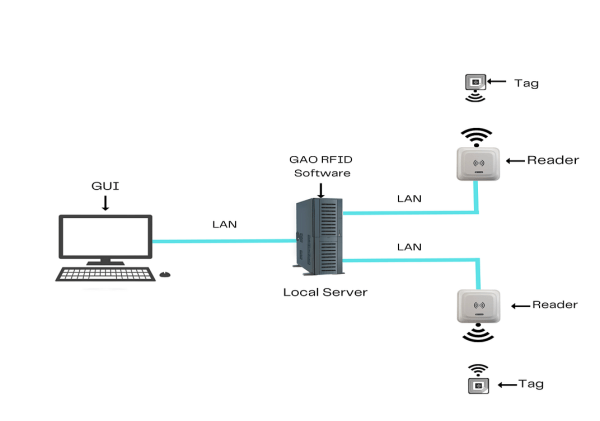
To satisfy its customers, GAO’s RFID or RFID Systems for administration of environmental quality programs are offered in 2 versions. One version is that its software is running on a local server, and another version is that its software runs in the cloud. The above illustrates GAO system for administration of environmental quality programs with its software running on a local server.

The above illustrates GAO system for administration of environmental quality programs with its software running in cloud.
GAO’s RFID and BLE technologies bring the many benefits to administration of environmental quality programs industry:
- Increased automation: GAO RFID technology enables automation of various tasks, reducing manual labor and associated errors. It can automate data logging, inventory management, and equipment tracking, freeing up human resources for more critical activities.
- Improved compliance and reporting: Our RFID technology facilitates compliance with environmental regulations and reporting requirements. It enables organizations to monitor and track their environmental practices, ensuring adherence to standards and facilitating the generation of comprehensive reports for regulatory bodies.
- Enhanced traceability and accountability: GAO’s RFID tags can be used to track the movement of materials, products, and hazardous substances within industrial facilities. This improves traceability and accountability, helping identify potential sources of pollution or environmental hazards and ensuring proper handling and disposal practices.
- Rapid incident response: In the event of an environmental incident or emergency, GAO RFID technology can play a crucial role in rapid response and mitigation. It enables quick identification of affected areas, tracking of response teams, and efficient deployment of resources to contain and resolve the situation promptly.
GAO’s RFID and drone technologies are often combined, and such solutions offer the following benefits to administration of environmental quality programs industry:
- Improved regulatory compliance: By combining GAO RFID and drone technologies, organizations can strengthen their compliance with environmental regulations. Drones equipped with GAO RFID technology can verify the presence and condition of required assets or monitor adherence to specific environmental standards, ensuring compliance and supporting regulatory reporting.
- Cost and time savings: Integrating our RFID and drone technologies can result in significant cost and time savings. Drones can efficiently perform monitoring and data collection tasks, reducing the need for manual labor and time-consuming fieldwork. GAO RFID technology aids in automation, asset management, and streamlined data processing, leading to improved operational efficiency and cost-effectiveness.
- Environmental mapping and modeling: Our RFID-tagged assets or sensors deployed in the environment can provide spatial data that helps create accurate environmental maps and models. Drones can collect this data, enabling organizations to develop detailed models for environmental impact assessments, scenario analysis, and planning of environmental management strategies.
Here are benefits of GAO’s IoT technologies to administration of environmental quality programs industry:
- Predictive analytics and maintenance: GAO IoT devices collect large volumes of environmental data over time. By utilizing advanced analytics techniques, organizations can gain insights into trends, patterns, and anomalies. This allows for predictive analytics and proactive maintenance, helping prevent environmental issues before they occur.
- Seamless data integration and interoperability: GAO’s IoT facilitates the seamless integration of diverse environmental monitoring devices, platforms, and databases. It enables different systems to communicate and share data, providing a unified view of environmental conditions and simplifying data analysis and reporting processes.
- Citizen engagement and participation: Our IoT technology can engage citizens in environmental quality programs. Public access to real-time environmental data and the ability to contribute data from personal GAO IoT devices empowers individuals to actively participate in monitoring and addressing environmental issues.
GAO’s Assists Clients with Standards, Mandates & Regulations of Administration of Environmental Quality Programs
GAO RFID Inc. has developed its products and systems in compliance with industry standards and mandates. GAO has assisted our customers in administration of environmental quality programs to deploy RFID, BLE, IoT and drone systems and to ensure such deployments complying with applicable industry standards, U.S. government regulations and Canadian government regulations such as:
RFID, BLE, IoT, & Drone Standards & Mandates
- EPCglobal standards: EPCglobal is a global organization that develops and manages standards for the Electronic Product Code (EPC) system, which is widely used in supply chain and asset management applications.
- IEC 62443: While not specific to RFID, the IEC 62443 series of standards focuses on cybersecurity for industrial automation and control systems, which can include RFID systems used in environmental quality programs.
- OneM2M: OneM2M is a global standards initiative that provides a common framework for interoperable IoT systems.
- ASTM F38 Standards: ASTM International’s Committee F38 on Unmanned Aircraft Systems has developed several standards applicable to drone operations.
- ICAO (International Civil Aviation Organization) Guidelines: The ICAO provides guidelines and recommendations for the safe and efficient operation of unmanned aircraft systems.
US. Government Regulations
- Clean Water Act (CWA): The Clean Water Act is a federal law that governs water pollution control in the United States.
- National Environmental Policy Act (NEPA): The National Environmental Policy Act is a federal law that requires federal agencies to consider the environmental impacts of their proposed actions.
- Clean Air Act (CAA): The Clean Air Act is a federal law that regulates air quality in the United States.
- Resource Conservation and Recovery Act (RCRA): The Resource Conservation and Recovery Act is a federal law that governs the management of hazardous waste from generation to disposal.
Canadian Government Regulations
- Fisheries Act: The Fisheries Act is a federal law that protects and conserves fish and their habitats. It prohibits harmful alteration, disruption, or destruction of fish habitat and regulates activities that may cause pollution in fisheries waters.
- Canadian Environmental Protection Act, 1999 (CEPA): CEPA is the primary federal legislation for the protection and conservation of the environment in Canada.
- Canadian Environmental Assessment Act, 2012 (CEAA): CEAA is the federal legislation that governs the environmental assessment of proposed projects.
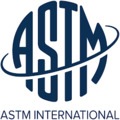
ASTM International
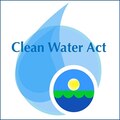
Clean Water Act
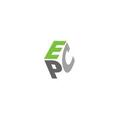
EPCglobal

Fisheries Act

International OneM2MAviation Commission
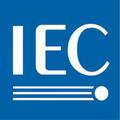
International Electrotechnical Policy Art

National Environmental Organization
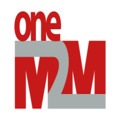
M2M
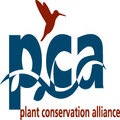
Plant Conservation Alliance
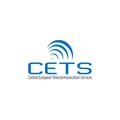
CETS
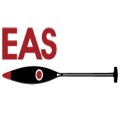
EAS
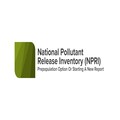
National Pollutant Release Inventory
GAO’s Software Provides API
GAO’s RFID and BLE software offers a free trial for both the server-based and cloud versions, and offers an API to the important systems in administration of environmental quality programs such as:
Personnel Management
- Performance Evaluation and Feedback: Software to track and evaluate employee performance in environmental quality programs, providing feedback and identifying areas for improvement.
- Skills and Competency Matrix: A system to create and maintain a matrix of skills and competencies required for different roles within environmental quality programs, aiding in employee development and succession planning.
- Training Needs Analysis: Tools to assess the training needs of personnel involved in environmental quality programs, identifying gaps, and facilitating the design and implementation of targeted training programs.
Equipment Management
- Asset Tracking and Utilization: Software to track the location, condition, and utilization of equipment in real-time, enabling efficient resource allocation and preventing loss or misuse.
- Equipment Retirement and Disposal: Systems to manage the retirement and disposal process of equipment, ensuring compliance with environmental regulations and optimizing resource utilization through recycling or proper disposal methods.
- Equipment Performance Monitoring: Tools to monitor and analyze equipment performance metrics, such as uptime, downtime, and maintenance costs, aiding in decision-making for repair or replacement.
Access Control
- Biometric Access Systems: Integration of biometric technologies, such as fingerprint or iris scanning, to enhance access control measures and improve security for sensitive environmental quality program areas.
- Visitor Pre-registration and Clearance: Online systems that allow visitors to pre-register and undergo security clearance processes before arriving at environmental quality program facilities, streamlining the visitor management process.
- Access Control Audit Trails: Logging and monitoring systems that capture and retain access control activities, providing an audit trail for compliance purposes and investigating security incidents.
Warehouse Management
- Real-time Inventory Tracking: Systems that utilize barcode or RFID technology to track inventory movements in real-time, providing accurate inventory levels and reducing the risk of stockouts or overstocking.
- Just-in-Time (JIT) Inventory Management: Implementation of JIT principles to minimize inventory holding costs while ensuring timely availability of materials and supplies required for environmental quality programs.
- Vendor Performance Evaluation: Tools to evaluate and assess the performance of vendors and suppliers based on factors such as delivery time, quality of goods, and adherence to environmental standards.
Supply Chain Management
- Demand Forecasting and Planning: Software that utilizes historical data and predictive analytics to forecast demand for materials and resources, supporting effective supply chain planning and inventory management.
- Green Procurement Initiatives: Implementation of procurement strategies that prioritize environmentally friendly and sustainable products and services, aligning with the overall goals of environmental quality programs.
- Supplier Collaboration Platforms: Online platforms that facilitate collaboration and communication between environmental quality program stakeholders and suppliers, streamlining procurement processes and fostering transparency.
Other Applications
- Public Outreach and Education: Development of online platforms or mobile applications to engage and educate the public about environmental quality programs, providing resources, tips, and interactive tools for sustainable practices.
- Risk Assessment and Management: Tools to assess and manage environmental risks associated with industrial processes, identifying potential hazards, and implementing risk mitigation strategies to protect the environment and public health.
- Environmental Monitoring Network: Establishment of a network of sensors and monitoring devices to continuously collect data on air quality, water quality, noise levels, and other environmental parameters, enabling real-time monitoring and early detection of potential issues.
GAO has enabled its customers to make use of some of leading software and cloud services in administration of environmental quality programs industry. Below are some of popular software and cloud services in administration of environmental quality programs industry:
- SAP SuccessFactors: SAP SuccessFactors is an integrated suite of HRMS software modules that cover various aspects of personnel management, including talent acquisition, training, performance management, and workforce planning.
- Workday: Workday offers a cloud based HRMS software solution that covers a wide range of HR functions, including personnel management, talent acquisition, compensation, and workforce planning.
- Microsoft Azure: Microsoft Azure is a comprehensive cloud computing platform that offers a range of services for personnel and equipment management. It provides tools for data storage, analytics, machine learning, and integration with other Microsoft productivity tools like Microsoft 365.
- Google Cloud Platform (GCP): GCP is Google’s cloud computing platform that provides a wide array of services for personnel and equipment management. It includes data storage, analytics, machine learning, and productivity tools that can be leveraged to streamline environmental quality programs.
- JDA Warehouse Management: JDA Warehouse Management is a popular software solution that offers features for warehouse optimization, labor management, inventory tracking, and order fulfillment.
- IBM Cloud: IBM Cloud is an enterprise-grade cloud platform that offers services for access control, warehouse management, and supply chain management. It provides tools for identity management, data storage, analytics, and application development that can be leveraged in environmental quality programs.
- Salesforce: Salesforce is a cloud-based customer relationship management (CRM) platform that can be adapted for access control, warehouse management, and supply chain management. It offers customizable solutions for managing user access, tracking inventory, and optimizing supply chain processes.
- EarthSoft EQuIS: EarthSoft EQuIS is a widely used environmental data management system that enables organizations to collect, analyze, and report environmental data, ensuring compliance with environmental regulations.
- Enviance: Enviance offers environmental compliance software that helps organizations manage and ensure compliance with environmental regulations through modules for task management, permit tracking, emissions management, and reporting.
- ServiceNow: ServiceNow is a cloud-based platform that provides IT service management (ITSM) and business process automation solutions. It can be customized to support the administration of environmental quality programs, enabling organizations to streamline processes, track compliance, and manage incidents and corrective actions.
- Amazon Web Services (AWS): AWS is a widely used cloud services platform that provides a range of services for environmental quality programs. It offers scalable storage, computing power, data analytics, and machine learning capabilities, along with various tools for data management and integration.

Amazon Web Services

Google Cloud Platform
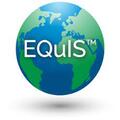
EarthSoft EQuIS

Enviance
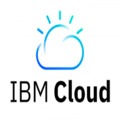
IBM Cloud

JDA Warehouse Management

Microsoft Azure

Salesforce

ServiceNow

Workday

SAP SuccessFactors
GAO has worked with some of the leading technology companies in administration of environmental quality programs in to provide integrated its RFID, BLE, IoT and drone solutions to customers. Here are some of the technology leaders in administration of environmental quality programs industry:
- IBM: IBM offers a range of environmental management solutions that help organizations monitor, analyze, and optimize their environmental performance. Their offerings include energy management, waste management, and water management solutions.
- Microsoft: Microsoft provides various software and cloud-based solutions that assist in environmental data management, sustainability reporting, and compliance monitoring. Their platforms enable organizations to track and analyze environmental metrics, set sustainability goals, and manage their environmental impact.
- Accuvio: Accuvio specializes in sustainability and environmental reporting software. Their platform enables organizations to collect, analyze, and report on environmental data, such as carbon emissions, energy usage, and water consumption.
- Enablon: Enablon is a leading provider of environmental, health, and safety (EHS) software solutions. Their platform offers modules for environmental compliance, sustainability reporting, risk management, and incident management, among others.
- Honeywell: Honeywell offers a range of environmental monitoring and control systems. Their solutions include air quality monitors, water quality sensors, and integrated environmental management systems that help organizations monitor and manage their environmental conditions.
- Siemens: Siemens provides environmental monitoring and control solutions for various industries. Their offerings include real-time monitoring systems, data analytics platforms, and energy management solutions that help organizations optimize their environmental performance.
- Schneider Electric: Schneider Electric offers a wide range of environmental management solutions. Their offerings include energy management systems, building automation technologies, and smart grid solutions that help organizations reduce energy consumption and improve environmental efficiency.
- Johnson Controls: Johnson Controls specializes in building automation and energy management solutions. Their technologies help organizations optimize energy usage, monitor indoor air quality, and maintain sustainable building operations.
- Envirosoft: Envirosoft offers a comprehensive environmental management system that assists organizations in managing and monitoring their environmental compliance, sustainability initiatives, and regulatory reporting.
- Gensuite: Gensuite provides a cloud-based environmental management system that helps organizations streamline their environmental programs. Their platform includes modules for compliance management, audits, incident tracking, and sustainability reporting.
- ERA Environmental: ERA Environmental offers a suite of software solutions for environmental compliance and sustainability management. Their system helps organizations track emissions, manage permits, conduct risk assessments, and generate regulatory reports.
- Greenstone+: Greenstone+ offers an environmental management software platform that helps organizations collect, monitor, and report on their environmental data. Their system includes modules for emissions tracking, waste management, and sustainability reporting.
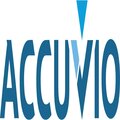
Accuvio
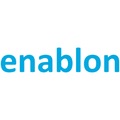
Enablon
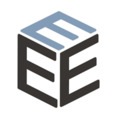
Envirosoft

ERA Environmental

Gensuite
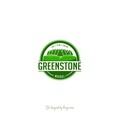
Greenstone+
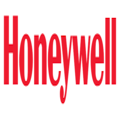
Honeywell

International Business Machines Corporation

Johnson Controls

Microsoft
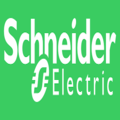
Schneider Electric
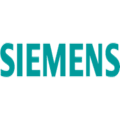
Siemens
Case Studies of RFID Applications
Below are some RFID application cases in administration of environmental quality programs industry.
- City of Toronto Waste Management (Canada): The City of Toronto in Canada implemented an RFID-based waste management system to optimize waste collection and promote recycling. RFID tags were affixed to residential waste bins, allowing for automated tracking and monitoring of waste disposal activities.
- Los Angeles Air Quality Monitoring (USA): The Los Angeles Department of Environmental Quality implemented an RFID-based air quality monitoring system to track and analyze pollution levels across the city. RFID-enabled sensors were deployed at strategic locations, such as busy intersections and industrial areas, to collect real-time data on air quality parameters.
- Recycling Bin Monitoring in a Municipality (USA): A municipality in the USA implemented a UHF RFID system to monitor recycling bin usage and contamination rates. Each recycling bin was equipped with a UHF RFID tag, enabling automated identification and tracking. When residents disposed of recyclables, the RFID system detected and recorded the activity.
- Wetland Restoration Tracking by an Environmental Organization (Canada): An environmental organization in Canada implemented a UHF RFID system to track and monitor the progress of wetland restoration projects. UHF RFID tags were attached to plants or wildlife within the wetlands, allowing researchers to collect data on growth and migration patterns.
GAO RFID Systems & Hardware for Administration of Environmental Quality Programs
GAO RFID Inc. offers the largest selection of BLE gateways, BLE beacons, RFID readers, tags, antenna, printers, and integrated RFID systems for various industries, including administration of environmental quality programs.
BLE (Bluetooth Low Energy)
GAO offers advanced BLE gateways:
as well as versatile beacons with such important functions as temperature, humility, vibration and panic button:
GAO’s BLE technology is suitable for many industries, including administration of environmental quality programs.
UHF (Ultra High Frequency) RFID
GAO offers the largest selection of UHF RFID readers for various industries, including administration of environmental quality programs:
GAO RFID offers the widest choice of UHF RFID tags, labels, badges, wristbands for various industries, including administration of environmental quality programs:
and an array of antennas to address different applications:
HF (High Frequency), NFC (Near Field Communications) and LF (Low Frequency) RFID
GAO offers the largest selection of HF, NFC, and LF RFID readers for various industries, including administration of environmental quality programs:
HF, NFC and LF RFID tags, labels, badges, wristbands for various industries, including administration of environmental quality programs:
and antennas:
GAO also offers RFID printers:
Digital I/O adapters:
and relay controllers:
For embedded applications, GAO offers UHF, HF and LF RFID reader modules:
- UHF 860 – 960 MHz RFID Modules
- UHF 860-960 MHz RFID Modules – GAO RFID Inc.
- 125 kHz Low Frequency RFID Modules
The RFID systems by GAO are highly popular for clients in administration of environmental quality programs:
Physical asset or operational equipment tracking system:
Assets that can be effectively tracked using GAO’s technologies include:
- Air Quality Monitoring Equipment: This includes devices such as air quality analyzers, particulate matter samplers, gas detectors, and meteorological instruments to assess and monitor air pollution levels.
- Water Quality Testing Equipment: Water quality monitoring involves the use of instruments like pH meters, dissolved oxygen meters, turbidity meters, conductivity meters, and multiparameter water quality analyzers to measure various parameters and ensure water safety.
- Soil Testing Equipment: Soil quality assessment requires tools like soil sampling kits, soil moisture meters, pH testers, and nutrient analyzers to evaluate soil composition, fertility, and contamination levels.
- Noise Monitoring Devices: To measure noise pollution, sound level meters and noise dosimeters are utilized to determine decibel levels in different areas and identify potential sources of excessive noise.
- Radiation Monitoring Instruments: Radiation detectors, such as Geiger-Muller counters and scintillation detectors, are employed to measure and monitor radiation levels in the environment, ensuring compliance with safety regulations.
- Emission Sampling Equipment: This includes equipment like gas analyzers, smoke meters, and opacity meters, used to sample and analyze emissions from industrial sources to assess their compliance with air quality standards.
- Remote Sensing Technology: Satellite imagery and aerial remote sensing equipment are utilized to monitor large-scale environmental changes, such as deforestation, land use changes, and natural disasters.
- Environmental Modeling Software: Specialized software applications are employed to simulate and model environmental scenarios, analyze data, and predict potential impacts on ecosystems, air quality, water systems, and climate.
- Hazardous Material Handling Equipment: This includes personal protective equipment (PPE) like gloves, masks, and hazmat suits, as well as spill containment kits, decontamination showers, and specialized equipment for handling and storing hazardous materials safely.
- Geographic Information System (GIS) Tools: GIS software and tools are used to create maps, analyze spatial data, and visualize environmental information, assisting in planning and decision-making processes.
People or workers tracking system:
Personnel or people access control system:
Parking or vehicle control system:
GAO Has Served Administration of Environmental Quality Programs Extensively
GAO’s products and technologies have helped its customers in administration of environmental quality programs industry to achieve success in sustainability, circular economy, climate change adaptation, greenhouse gas (GHG) emissions, ecosystem services, environmental justice, renewable energy, environmental impact assessment (EIA), carbon neutrality, biodiversity conservation, green infrastructure, and life cycle assessment (LCA).
GAO RFID Inc. has deployed RFID, BLE and IoT projects for many companies in administration of environmental quality programs, including many in its various divisions such as:
- Air Quality Management: This division focuses on monitoring, regulating, and improving air quality by implementing programs and policies to reduce air pollution from industrial sources, vehicles, and other emissions.
- Water Quality Management: This is concerned with the protection and management of water resources, including rivers, lakes, oceans, and groundwater. It involves monitoring water quality, enforcing water pollution control regulations, and implementing programs to ensure clean and safe water supplies.
- Hazardous Waste Management: This division deals with the proper handling, treatment, storage, and disposal of hazardous wastes generated by industries, healthcare facilities, and other sources. It includes regulatory oversight, permitting, and enforcement of hazardous waste management practices.
- Solid Waste Management: It focuses on the management of non-hazardous solid waste, including municipal waste, industrial waste, and construction debris. It involves waste reduction, recycling programs, landfill management, and the development of sustainable waste management practices.
Here are some of the leading companies in administration of environmental quality programs industry:
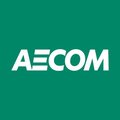
AECOM
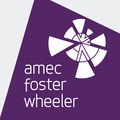
AMEC Foster Wheeler

Antea Group

Arcadis
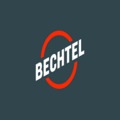
Bechtel Corporation
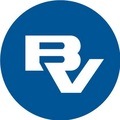
Black & Veatch

Burns & McDonnell

Cardno
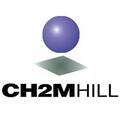
CH2M Hill
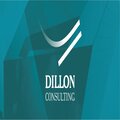
Dillon Consulting Limited
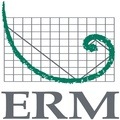
Environmental Resources Group Management
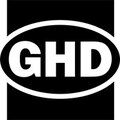
GHD Group
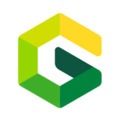
Golder Associates
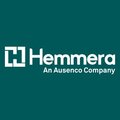
Hemmera, an Ausenco Company Group

Jacobs Engineering

Ramboll
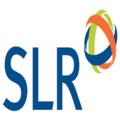
SLR Consulting

SNC-Lavalin

Stantec

Tetra Tech
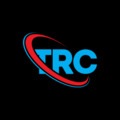
TRC Companies

Wood PLC

WSP USA

Associated Engineering
